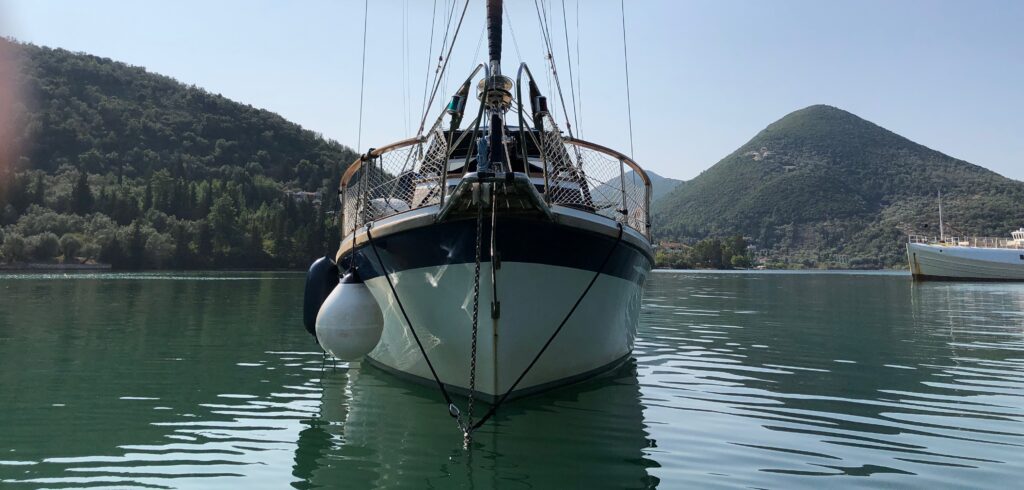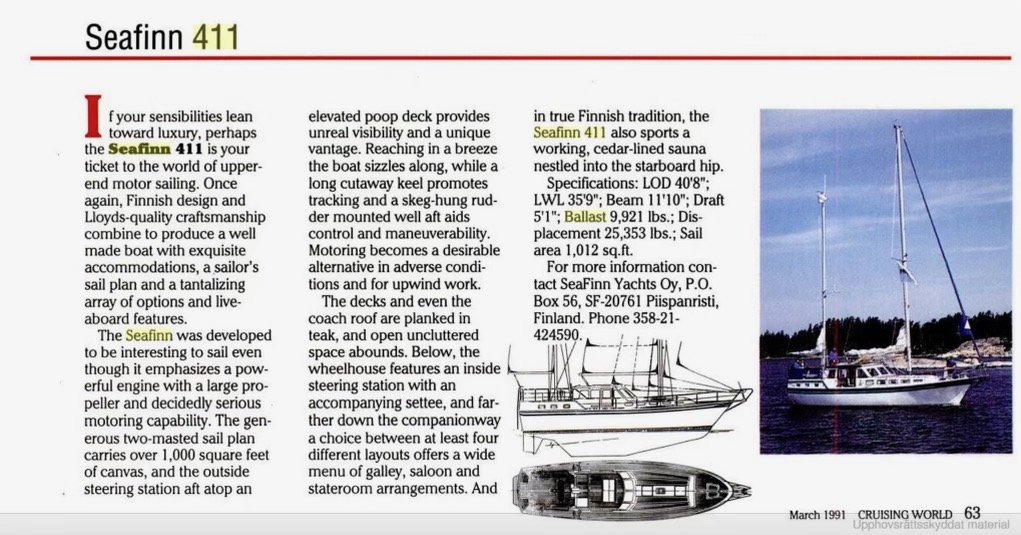
We came across the following post on Facebook:
We got tired of constantly thinking about depth, length etc. so we have marked the WATER DEPTH with yellow colour: 3 yellow lines = 3m of water. And we found a more realistic formula than just 7xdepth or 4xdepth:
12*square root(depth)
It takes more into account that the chain hangs. And remember freeboard! We have about 1.5m of freeboard, so at 2.5m of water the depth is actually 4m. So with this formula we have marked the following (in parenthesis chain at the 7xdepth formula):
- 3 yellows (3m water, 4.5m total height) : 25m chain (7xh= 31.5) (In brackets: are we the only ones who lay 25m at 3m water?)
- 5 yellow: 31m chain (45.5m with 7xh)
- 10 yellow: 41m chain (80m with 7xh)
- 15 yellow (15m water) : 49m chain (our nuv Max) (115m with 7xh)
- And in strong winds, we lay out to 1-2m more than the depth.
No calculations while fiddling with anchorage, we just need the water depth.
We have a 44-foot steel boat of 19 tons and must have at least 100 m of chain for long-distance sailing. But has been in England with 16ms constant wind at 8-10m depth with these markings (however laid out for a little deeper and on a good bottom)
It sounded like a really good idea, which we have translated into the following:
The anchor chain is marked according to the current water depth calculated from the following formula, which takes into account that the chain hangs in a parabola:
12*square root (depth+headroom)
Clearance is the height of the anchor roller above the surface. In our case, it is 1.5 m.
Marking is done with blue, split PP cord. Each tag consists of 2 cords (so the marking is still visible if a cord is lost)
| Depth (meters) | Meters of chain | Number of marks |
|---|---|---|
| 3 | 25 | 1 |
| 6 | 33 | 2 |
| 9 | 39 | 3 |
| 12 | 45 | 2 x 2 |
| 15 | 49 | 1 |
| 20 | 56 | 2 |
The table is written with marker on the back side of the anchor well cover, so you just need to know the reading of the depth on the sonar.
If it’s windy, we put a few more meters out. We have a Kobra anchor and a total of 75 m of 10 mm stainless chain for our boat of 13 tons in total. We have set out using this formula in 7m of water in Vliho bay in Greece and at 22m/s we have held both ourselves and another 40ft sailboat lying across our bow.
And then we use two “anchor snubbers” or chain relievers, especially if there is little wind or there is sea.
There is a lot of literature on the subject, an app has also been made for the calculations, which of course depend on hull length, weight and much more, see e.g. here: Ancher chain calculator

